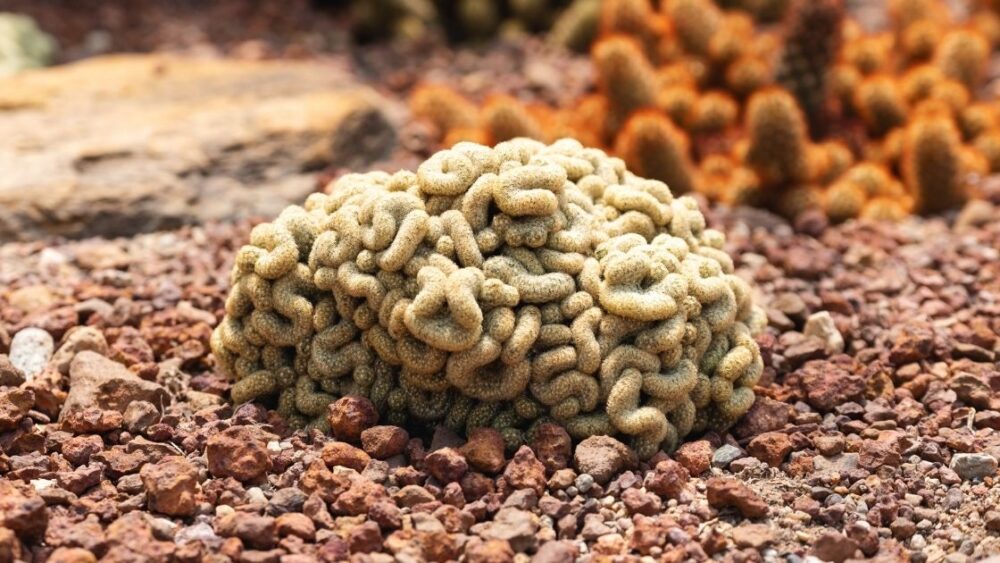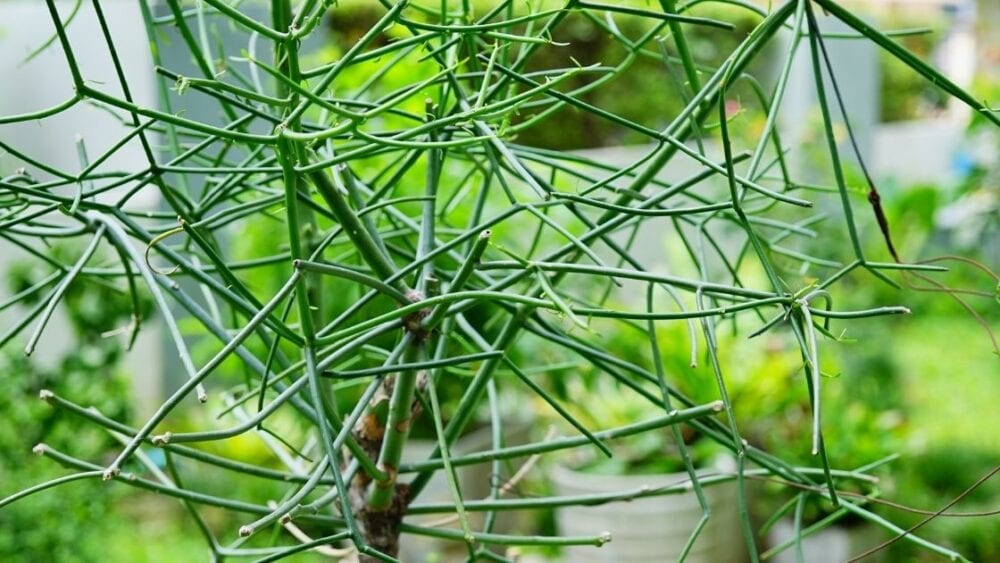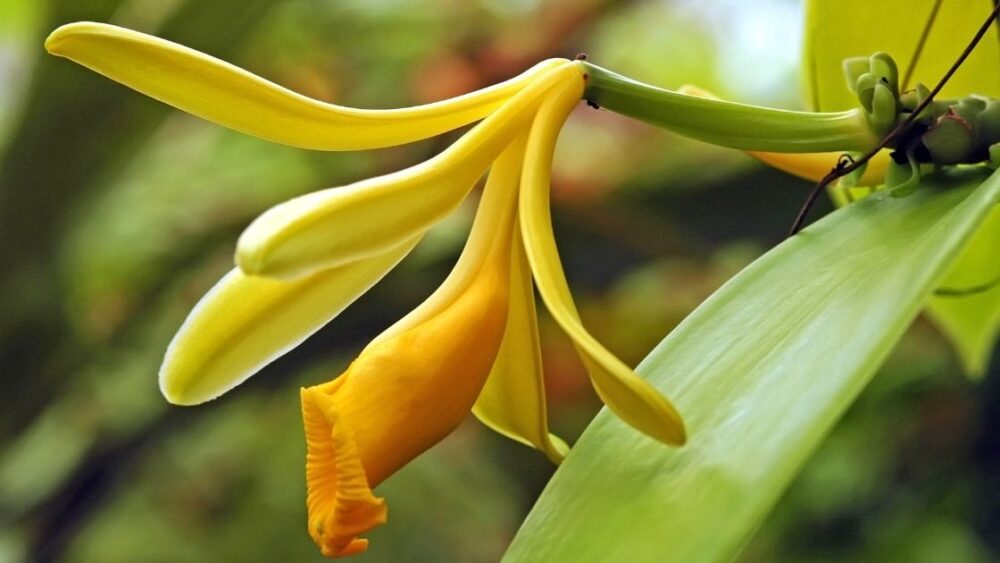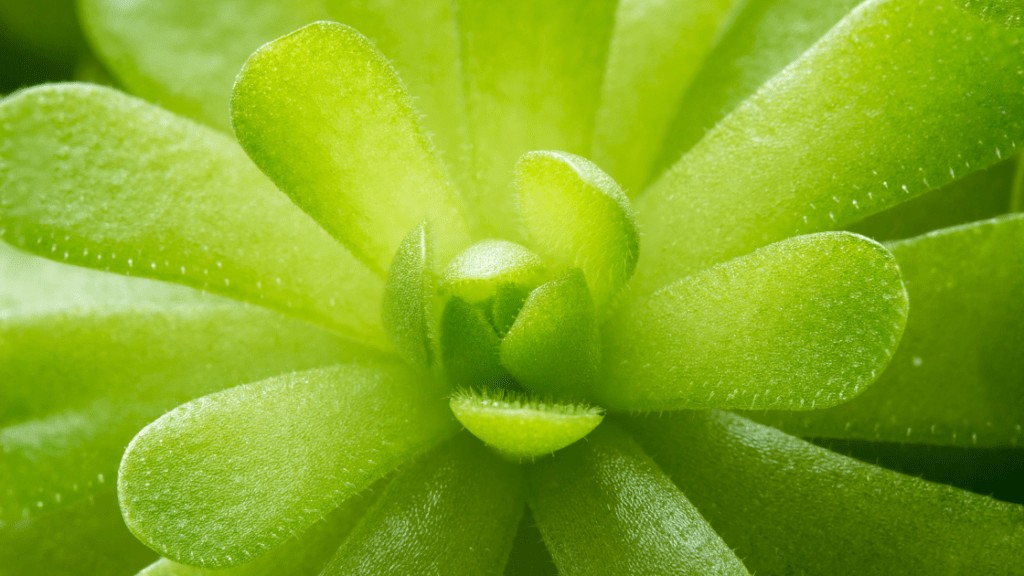
At first glance, Pinguicula (Common name: Butterwort) may not seem like the most interesting carnivorous plant out there: unlike the Venus flytrap, it captures and digests its prey in a completely passive manner without moving any part of its leaves.
It also lacks the peculiar look of pitcher plants like Nepenthes and Sarracenia and instead looks more like a common violet. However, many people who are fascinated with growing carnivorous plants soon discover that Pinguicula is in fact one of the more interesting carnivorous plants to grow and take care of. It’s one of the easiest and quickest plants to propagate and it easily captures a lot of prey on its own.
Many Butterwort species have retained the ability to absorb plenty of nutrients through their roots – something that is very rare in carnivorous plants in general. This makes it easy to achieve very fast growth by applying regular fertilizer to the soil. In the following paragraphs, we’ll explore Butterworts in more detail, will take a look at their growth requirements and will go over everything you need to know in order to successfully take care of them and propagate them!
Browse our Affiliate Products
Pinguicula – General Description and Species Overview
The Pinguicula genus currently contains 74 species.
All Pinguicula species are low-growing, rosette-forming plants with thick, pale green leaves. All species produce violet-looking flowers which grow on tall stems.
There are large differences between different Pinguicula species and they are usually divided into two groups –
- temperate / tropical
- Mexican / European.
A large number of cross-bred varieties also exist.
Where Does The Name ‘Pinguicula’ Come From? Is Pinguicula a Succulent?
‘Pinguicula’ comes from the Latin ‘pinguis’, which means ‘fat’ – this of course refers to the thick, meaty, succulent leaves of the plant.
Although the plant has leaves similar to many succulents, it is not at all classified as a succulent. It’s not drought-tolerant and its thick leaves serve more as a nutrient storage for the winter dormancy period.
Other Pinguicula Species Varieties
There are many species and cross-varieties of Pinguicula and they have different temperature requirements. Here are three common varieties:
Pinguicula Grandiflora
One of the most common temperate varieties. It likes low temperatures and anything higher than 78F (25C) will quickly become problematic for the plant.
It requires a winter dormancy period and is likely to die if it’s not provided with one. As its name implies, it has somewhat larger flowers. It also has a potential to develop a large rosette – up to 6 inches in diameter.
Pinguicula Moranensis

Very similar-looking to P. grandiflora, but with very different growth requirements. This is a Mexican butterwort that has several sub-species, some of which can grow well without being given a dormancy period.
Being a tropical variety, the visual look of this plant doesn’t change in a very obvious manner during its winter dormancy period – it doesn’t form the typical ‘hibernaculum’ which temperate species produce. Instead, it may simply grow a few leaves that aren’t sticky.
Pinguicula Tina
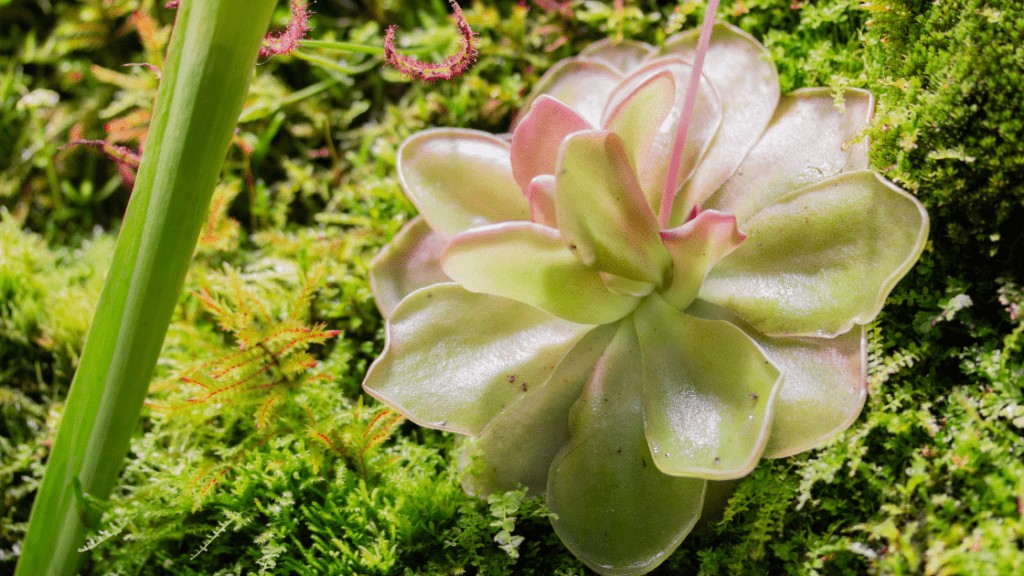
A cross between P. Agnata and P. zecheri, which are both Mexican varieties. It has large, round leaves that overtake the whole surface of a small pot, making it one of the more visually-pleasing varieties. This is one of the most commonly available varieties in supermarkets and stores. Like is the case with most other Mexican varieties, this one doesn’t go through very obvious changes during its dormancy phase and dormancy isn’t strictly necessary for long-term survival.
Check out Etsy’s choice in butterwort as seen below,
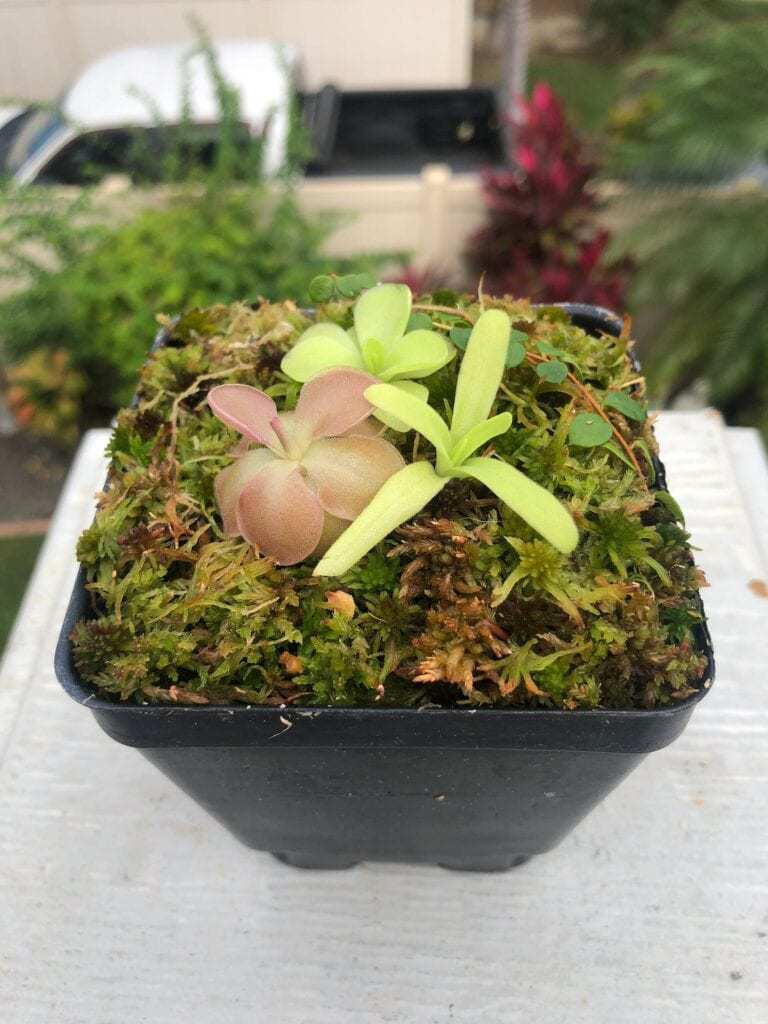
Pinguicula Growth Requirements, Propagation and Winter Rest
Butterworts are one of the easiest carnivorous plants to take care of and propagate. However, it’s important to accurately identify the species you’re growing and determine whether it’s temperate or tropical.
Temperate species don’t do well in temperatures above 78F(25C) and their seeds germinate in very low temperatures of around 50F (10C). They also require dormancy and should be kept at low temperatures during the winter months – they can also survive freezing temperatures.
However, if you misidentify your Pinguicula species you can kill it – Mexican varieties don’t do well below 45F (7C).
If you want some more information, check out this YouTube video below.
Growing Pinguicula Indoors vs. Outdoors
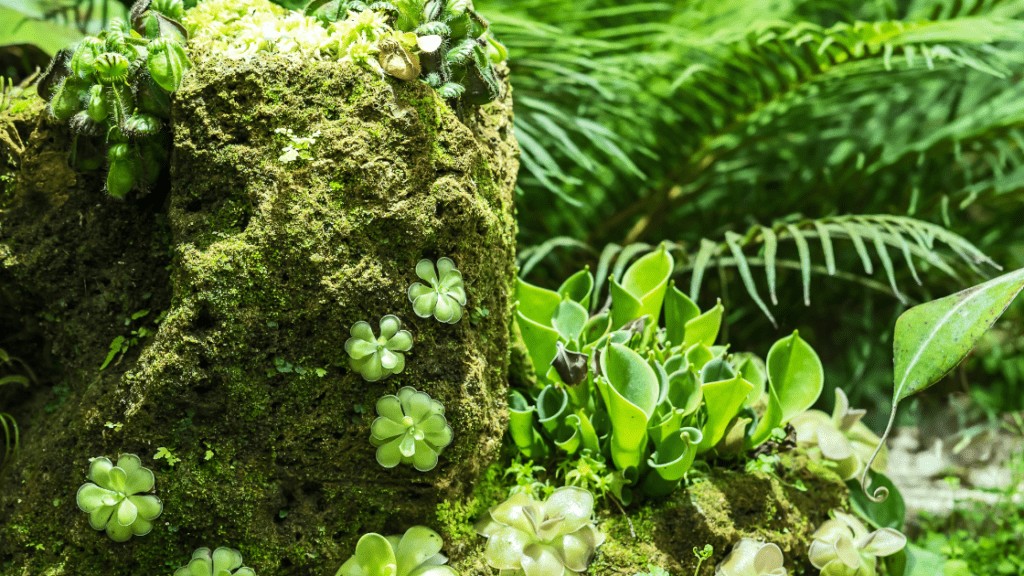
Temperate Pinguicula varieties, especially P. Grandiflora and P. Vulgaris are very well suited to growing outdoors and they tolerate very low freezing temperatures.
Many people report that when grown from seed, Pinguicula doesn’t grow well indoors and that outdoor seedlings look much better. This is most likely because of natural dust and pollen particles on which the tiny seedlings feed and which are mostly absent in clean indoor air.
Do They Tolerate Direct Sunlight?
Butterworts like bright, indirect light. This varies by species – some varieties like P. vallisneriifolia grow on north-facing rock formations and haven’t developed roots that are deep enough to transport a lot of water.
As a result, they will quickly die if placed in direct sunlight. However, many Mexican varieties can tolerate direct sun if they are slowly acclimatized to it. Ultimately, it’s best to provide Butterworts with indirect sunlight only in order to avoid possible problems in which they will do great on indoor window sills.
Type of Soil & Fertilization
Pinguicula differs from most other carnivorous plants in that it can absorb nutrients well from its roots. This however is species dependent – P. sharpii still requires acidic, peat-based soils that are poor in nitrogen and fertilization will most likely kill it.
However, some species like P. gigantea and P. laueana are able to grow in rich soil, in which case they can grow to large sizes (larger than 5 inches in diameter) in as little as 4 months. The same result can be achieved by growing the plant in the typical nutrient-poor peat medium it is typically planted in and fertilizing it with a suitable fertilizer that contains all trace-elements.
Keep in mind that this is highly experimental and there is always a risk of killing your plant if you attempt to fertilize it or grow it in a compost-rich medium. For more information about soil, check out our article. What Are The BEST Potting Soils for Every Type of Plant?
Is Manual Feeding Recommended?
All Butterworts respond well to feeding, but it is only necessary if the plant doesn’t catch insects on its own. Typically, the plant has no problem catching a lot of fungus gnats or fruit flies, even indoors.
However, if you don’t notice any insects getting trapped, you may catch them and place them on the leaves manually. Powdered fish pellets are also used by some people and Pinguicula can digest and absorb all sorts of protein-rich organic media. Usually, you’ll be able to observe a 2-3 week long growth spur after a generous feeding.
How Often Should Butterworts Be Watered?
Mexican butterworts generally prefer a bit more dry soils compared to temperate species. It’s best to look up the specific requirements of the species you are growing.
Unlike most carnivorous plants which can be killed by watering with highly-mineralized tap water, Pinguicula tolerates water solutes very well – as we already mentioned, some species can even be fertilized.
However, it’s still best to use distilled water, because hard tap waters with reading above 100 PPM can still lead to a high accumulation of calcium in the soil.
Bottom watering through the tray usually works best and considering that Butterworts often cover the whole surface of the pot, it is often the only option. Getting the base of the rosette too wet for too long can lead to fungal problems that can kill the plant.
Is Repotting Necessary?
If you want to grow the plant long-term, repotting is necessary. Although Pinguicula absorbs a lot of nitrogen and phosphorus from captured insects, potassium is mainly absorbed through the roots, which eventually depletes the medium and growth stops.
Common 1:1 peat and perlite substrates work well. Instead of repotting the plant, many people choose to propagate it by collecting seeds or rooting leaf pullings – we’ll go over this next.
Propagation via Leaf Pullings
Pinguicula is easy to propagate. The most common and proven method of propagation is via leaf pullings.
Leaf pullings aren’t cuttings – instead, they contain the white part from the base of the rosette. This part of the plant is rich in undifferentiated cells – cells which can develop into roots, as well as leaves. If you cut a leaf with a knife instead of pulling it, the chances of success will be much, much lower. Leaf pullings are placed on a wet medium, such as peat moss, perlite or any other rock-based substrate that wicks water well.
The best results come when the pulled part of the leaf is in contact with the wet medium. In less than 2 weeks, tiny rosettes will start forming on the pulled end of the leaf. With some luck, more than 1 rosette may form on a single leaf.
Once developed, the tiny rosettes may be potted in a peat medium and will eventually grow into mature plants.
Do Butterworts Do Well In Terrariums?
Although butterworts don’t have the high-humidity requirements of other carnivorous plants (like Drosera), they still do very well in terrariums.
Because butterworts flower every year, it’s important to consider the height of the terrarium and whether it will be able to accommodate the flower stem, which can be up to 10 inches high. Many butterworts prefer a more dry substrate, which can be easily achieved by making a tiny mountain in the terrarium and planting all the Pinguicula plants on it.
The lower parts of the terrarium may house more moisture-loving carnivores like the Venus flytrap. For more information about terrariums, check out our article here. How to Build Your Own Terrarium: Beginners Guide
What Other Plants Are They Best Combined With?
Because butterworts can grow in the peat substrate preferred by all other carnivorous plants, they can be successfully combined with all of them.
This is mainly a matter of personal preference and visual appeal. Smaller, immature Flytraps or Sarracenia plants make excellent butterwort companions.
When Do Butterworts Bloom?
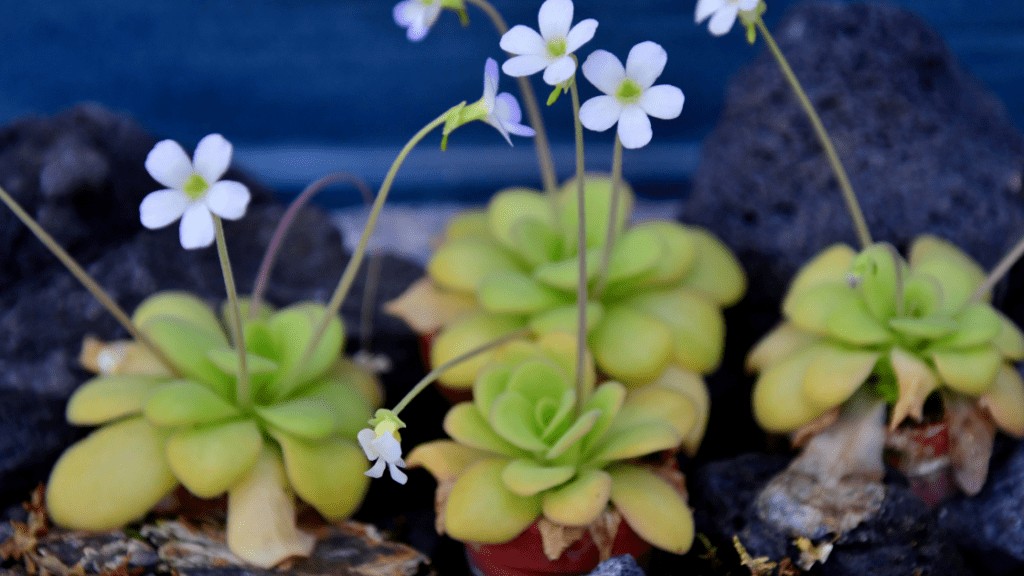
Butterworts bloom shortly after their dormancy period is over. Once a plant comes out of dormancy, it will begin producing new leaves and the flower stem will appear soon after – usually around the beginning of summer.
What Should You Do When They Start Flowering?
The flowers are an important visual feature of Butterworts and most people choose to let them develop instead of pinching them.
Because Pinguicula is relatively easy to grow from seed, the flowers may be manually pollinated and the seeds collected.
Common Issues You May Experience
Butterworts aren’t prone to problems and most of the problems you may experience come from too much top watering, breaking the winter dormancy too quickly or insufficient light levels. Temperate varieties are also very sensitive to high temperatures.
Rot Starting From The Base Of The Rosette
This is almost always a fungal problem that can kill the whole plant extremely quickly. It has also been called “Browning heart disease”, because the rot leads to browning of the tissue.
This problem is caused by the Fusarium fungus and can be treated with anti-fungal sprays. However, it’s best to prevent the problem in the first place by avoiding top watering and not keeping the humidity too high. Plants grown in terrariums are particularly vulnerable.
Thermal Shock After Winter Dormancy
This is a species-dependent problem, but as a general rule, all Butterworts should be brought out of their dormancy slowly.
Moving the plant from a cold garage to a warm living room during the spring will result in shock and the tips of the leaves will start browning. Eventually, the whole plant may die if new leaves don’t start forming fast enough.
Plant Rotting During Dormancy
Temperate varieties form a tight pine cone-looking hibernaculum during their hibernation period. If you top water this tight rosette, fungal pathogens may set in and eventually kill it.
The plant has low water requirements during the winter rest, so this problem is easily avoided by watering less frequently and more carefully.
Final Thoughts
Butterworts are one of the best carnivorous plants for hobbyist growers – unlike other carnivorous plants they can grow very quickly.
They can be propagated easily, fertilized for fast growth and fed with all sorts of powdered and protein-rich organic matter. There are dozens of species and growth requirements are very species-dependent.
The first step to successfully start taking care of your butterwort is to identify it and determine if it’s a temperate or Mexican species. For temperate species, a winter dormancy period is a must and care should be taken to break the dormancy slowly to avoid shock.







